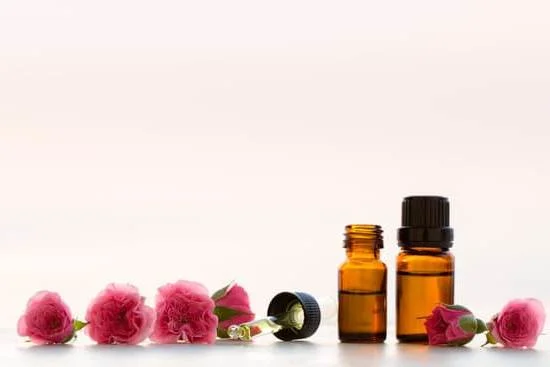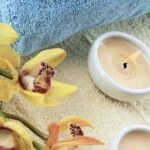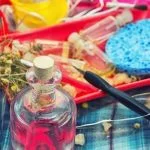Have you ever wondered how to make aromatherapy diffuser oil at home? Aromatherapy diffuser oils have become increasingly popular for their ability to create a relaxing and inviting atmosphere in any space. This article will guide you through the process of creating your own custom blends of diffuser oils, as well as provide valuable information on the benefits and uses of aromatherapy diffuser oils.
Aromatherapy diffuser oils are a natural way to fill your home with delightful scents while also reaping the therapeutic benefits of essential oils. Whether you want to create a calming ambiance, boost your mood, or alleviate stress, using diffuser oils can help achieve these goals. In this article, you will discover the various ways in which aromatherapy diffuser oils can enhance your well-being and overall environment.
Furthermore, this comprehensive guide will cover everything from essential oil selection to carrier oils and provide step-by-step instructions for crafting your own proprietary blend of aromatherapy diffuser oil. By understanding the different types of essential oils and learning how to combine them effectively, you can customize your blend to suit your preferences and target specific needs for relaxation, focus, energy, or sleep.
Ready to embark on a journey into the world of aromatherapy? Keep reading to learn all about making your own aromatherapy diffuser oil.
Essential Oils 101
When it comes to creating your own aromatherapy diffuser oils, choosing the right essential oils is crucial. Not all essential oils are created equal, and each one offers a unique set of benefits and properties. So how do you know which ones to choose?
First, consider the type of mood or atmosphere you want to create. For example, if you’re looking to promote relaxation and stress relief, lavender and chamomile essential oils are excellent choices. On the other hand, if you want to boost energy and mental clarity, citrusy scents like lemon and orange are ideal.
Another factor to consider is the potential health benefits of the essential oils. Some have antibacterial or anti-inflammatory properties, while others can help ease headaches or relieve respiratory issues. Doing research on the specific benefits of different essential oils can help you choose the best ones for your needs.
To create a well-rounded blend, it’s also important to consider the scent profiles of the essential oils. Combining top notes (like citrus), middle notes (such as floral or spicy scents), and base notes (like woodsy or earthy aromas) can result in a balanced and pleasant aroma for your diffuser oil.
Now that you understand how important it is to choose the right essential oils for your aromatherapy diffuser blends, let’s move on to learning how to make them.
| Essential Oil | Main Properties |
|---|---|
| Lavender | Relaxation, stress relief |
| Lemon | Energy boost, mental clarity |
| Peppermint | Headache relief, respiratory support |
Carrier Oils
Aromatherapy diffuser oils are a popular way to enjoy the benefits of essential oils in your home. These oils are typically used with a diffuser, which disperses the aroma and promotes a sense of well-being and relaxation. In order to create effective aromatherapy diffuser oils, it’s important to understand the role of carrier oils in the process.
Carrier oils are vegetable oils that are used to dilute essential oils before they are applied to the skin or used in a diffuser. They help “carry” the essential oil onto the skin and also help to disperse the fragrance when used in a diffuser.
Some popular carrier oils include jojoba oil, sweet almond oil, coconut oil, and grapeseed oil. Each carrier oil has its own unique qualities and benefits, so it’s important to choose the right one for your specific needs.
When making aromatherapy diffuser oils, it’s crucial to choose a carrier oil that will complement the scent of the essential oil you plan to use. For example, if you’re using a calming essential oil such as lavender, you may want to pair it with a light and neutral carrier oil like sweet almond oil.
On the other hand, if you’re using an invigorating essential oil like peppermint, you may prefer to use coconut oil for its refreshing scent.
In addition to helping disperse the aroma of the essential oils, carrier oils also serve as a way to prolong the fragrance and increase its longevity when used in a diffuser. Understanding which carrier oils work best with specific essential oils is key in creating effective aromatherapy diffuser blends that will provide both therapeutic benefits and an enjoyable sensory experience.
| Carrier Oil | Best Used With |
|---|---|
| Jojoba Oil | Citrus Oils |
| Sweet Almond Oil | Lavender Oil |
| Coconut Oil | Peppermint Oil |
DIY Aromatherapy Diffuser Oil Recipes
When it comes to creating your own aromatherapy diffuser oils, the possibilities are endless. Not only can you customize the scent to your preferences, but you also have the benefit of knowing exactly what ingredients are being used. Here’s a step-by-step guide on how to make aromatherapy diffuser oil blends at home:
1. Choose Your Essential Oils: The first step in creating your own diffuser oil blend is selecting the essential oils you want to use. Consider the desired therapeutic benefits and the aroma profile you want to achieve. For example, if you’re looking for a calming blend, consider using lavender, chamomile, and ylang-ylang essential oils.
2. Select Your Carrier Oil: Carrier oils are important for diluting essential oils and helping them disperse effectively in the air. Common carrier oils include sweet almond oil, jojoba oil, and fractionated coconut oil. When choosing a carrier oil, consider its scent and viscosity, as well as any potential allergic reactions.
3. Measure and Mix: Once you’ve chosen your essential oils and carrier oil, it’s time to measure and mix them together. A general guideline is to use 15-30 drops of essential oil per 2 ounces of carrier oil for a medium-strength diffuser blend. Be sure to mix thoroughly to ensure that the essential oils are evenly dispersed.
4. Test and Adjust: After mixing your oils, it’s important to test the blend before using it in your diffuser. Place a few drops on a cotton ball or tissue and see how the scent develops over time. If necessary, tweak the blend by adding more drops of essential oil until you achieve the desired aroma strength.
By following these steps, you can create your own custom aromatherapy diffuser oil blends that cater to your individual needs and preferences. Whether you’re looking for an energizing blend to boost productivity or a relaxing blend for unwinding after a long day, making your own diffuser oils allows you to tailor the experience to fit your lifestyle perfectly”.
Tips for Blending
When it comes to creating your own aromatherapy diffuser oil blends, there are a few key tips to keep in mind to ensure that you achieve the perfect balance and effectiveness. Whether you are looking to create a relaxing blend for winding down in the evening or an invigorating blend for a morning pick-me-up, these expert tips will help you create a well-rounded and harmonious aroma.
Understanding Scent Categories
One important aspect of creating balanced aromatherapy diffuser oil blends is understanding scent categories. Essential oils can generally be classified into different scent categories such as floral, citrus, woody, herbal, and spicy. When blending your own oils, it’s helpful to choose oils from different scent categories to create a more complex and layered aroma.
Start With Base Notes
Another tip for creating effective diffuser oil blends is to start with base notes. Base notes are typically the heavier and longer-lasting scents in a blend, such as cedarwood or patchouli. By starting with base notes and then adding middle and top notes, you can ensure that the overall aroma is well-rounded and long-lasting.
Experiment and Take Notes
Lastly, don’t be afraid to experiment with different essential oil combinations. Keep track of your recipes and take note of which blends work best for your preferences. There is no one-size-fits-all approach to creating diffuser oil blends, so it’s important to explore different combinations until you find what works best for you.
By following these expert tips for blending aromatherapy diffuser oils, you can create unique and effective blends that suit your individual needs and preferences. Experimenting with different oils and taking the time to understand their properties will ultimately lead to the creation of personalized diffuser oil blends that enhance your overall well-being.
Storage and Usage
Aromatherapy diffuser oils offer a natural and holistic way to enhance your environment, promote relaxation, and improve your overall well-being. Making your own homemade diffuser oils allows you to customize scents to suit your preferences and needs. However, proper storage and safe usage are essential to ensure the longevity and effectiveness of your homemade creations.
Proper Storage
When it comes to storing your homemade aromatherapy diffuser oils, it’s important to keep them in a cool, dark place away from direct sunlight and heat. This will help prevent the essential oils from deteriorating and losing their potency over time.
Consider using dark glass bottles with tight-fitting lids to protect the oils from exposure to air and light. Additionally, labeling each bottle with the date of creation and the ingredients used can help you keep track of the shelf life of each blend.
Safe Usage Tips
Before using your homemade diffuser oils, it’s crucial to understand how to use them safely. Always dilute essential oils with a carrier oil before applying them directly to the skin, as undiluted essential oils can cause irritation or allergic reactions.
When using a diffuser, follow the manufacturer’s instructions for adding the oil blend and operating the device. It’s also important to keep diffusers out of reach of children and pets, as some essential oils can be toxic if ingested.
Additional Tips
- Avoid placing your homemade diffuser oil blends near open flames or sources of high heat.
- Check for any signs of oxidation or changes in color or scent, as this may indicate that the oil has spoiled.
- If you plan on gifting or transporting your homemade diffuser oils, consider packaging them securely in leak-proof containers to avoid spills or leaks.
By following these storage and usage tips, you can ensure that your homemade aromatherapy diffuser oils remain safe, effective, and enjoyable for therapeutic use in your home.
Aromatherapy Diffusers
Types of Aromatherapy Diffusers
- Ultrasonic Diffusers: These diffusers use ultrasonic vibrations to disperse a fine mist of water and essential oils into the air. They are gentle and provide humidity to the room.
- Nebulizing Diffusers: Nebulizing diffusers do not require water and instead disperse pure essential oil into the air. They are powerful and ideal for larger spaces.
- Evaporative Diffusers: These diffusers use a fan to evaporate essential oils from a pad or filter. They are simple and easy to use.
- Heat Diffusers: Heat diffusers use heat to evaporate essential oils into the air. While they are effective, they may alter the therapeutic properties of the oils.
Using Your Oils With Different Diffuser Types
Each type of diffuser may require a slightly different approach when using aromatherapy oils. For ultrasonic diffusers, it is important to mix your essential oil blend with water before adding it to the unit’s reservoir. Nebulizing diffusers require pure undiluted essential oil for best results. Evaporative diffusers work well with pre-diluted essential oils on a pad or filter, while heat diffusers also benefit from pre-diluted oils added onto a heat source.
Understanding how to properly use your homemade aromatherapy oil blends with different types of diffusers will ensure that you get maximum benefit from your chosen method of dispersing fragrance throughout your environment.
Expert Tips for Using Aromatherapy Diffuser Oils
To enhance your experience with aromatherapy diffusion, consider experimenting with different oil blends based on your needs – calming, invigorating, etc. Remember that less is sometimes more when it comes to using essential oils in a diffuser – start with just a few drops and adjust as needed depending on the size of the room and personal preference. Additionally, be sure to clean out your diffuser regularly to prevent any build-up that could impact its performance over time.
Learning how to make aromatherapy diffuser oil is just one part of enjoying this beneficial practice at home; understanding how different types of devices work will help users get the most out their homemade creations.
Conclusion
In conclusion, aromatherapy diffuser oils offer a natural and effective way to improve your well-being and create a relaxing atmosphere at home. By harnessing the power of essential oils and learning how to make aromatherapy diffuser oil blends, you can customize scents to suit your mood and needs.
Whether you’re looking for a calming blend for meditation or an invigorating scent for a boost of energy, DIY diffuser oils give you the flexibility to create the perfect atmosphere in your living space.
The benefits of using aromatherapy diffuser oils extend beyond just creating a pleasant aroma. Different essential oil blends can help reduce stress, alleviate headaches, promote better sleep, and even boost cognitive function.
With the right combination of essential and carrier oils, you can experience the therapeutic effects of aromatherapy right in your own home. By following the tips on how to make aromatherapy diffuser oil blends and understanding the different types of diffusers available, you can fully enjoy the benefits of aromatherapy.
So why not give it a try? Making your own aromatherapy diffusing oil is easier than you think and offers a wide range of benefits for your overall well-being.
With this guide as your starting point, take a step towards creating a more relaxing environment at home by experimenting with different essential oil blends and enjoying the soothing effects they provide. Whether it’s for stress relief, better sleep, or simply adding a pleasant fragrance to your space, DIY aromatherapy diffuser oils are a simple yet powerful way to enhance your daily life.
Frequently Asked Questions
How Do I Make My Own Diffuser Oil?
Making your own diffuser oil is simple and customizable. Start by choosing a carrier oil like sweet almond or jojoba, then add your preferred essential oils for fragrance. Mix them together and pour into a glass bottle, then add diffuser reeds.
What Is the Best Oil for Homemade Diffuser?
The best oil for homemade diffusers is typically a carrier oil like fractionated coconut oil, sweet almond oil, or grapeseed oil. These oils help to carry the scent of the essential oils and disperse them effectively into the air.
What Ingredients Do You Need to Make Diffusers?
To make homemade diffusers, you will need a carrier oil, essential oils of your choice, glass bottles with narrow openings, and diffuser reeds or bamboo skewers. Optionally, you can also add rubbing alcohol or vodka to help thin out the oils and aid in evaporation.

Are you looking for a natural way to improve your health and wellbeing?
If so, aromatherapy may be the answer for you.





